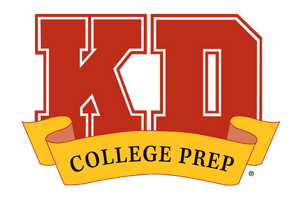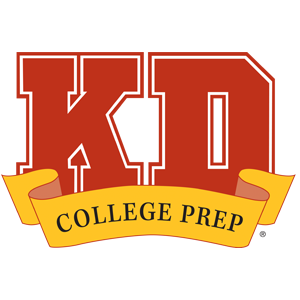With college tuition rising yearly at a rate far greater than that of annual household income, many high school students have found that paying for college seems impossible. Luckily, though, there are scholarships out there to help you meet your financial needs! Use our scholarship guide to maximize your chances of receiving a scholarship.
3 Types of Scholarships
1. Scholarships offered by your school district
While often limited to only a few students per scholarship, many school districts offer rewards for those who meet certain academic criteria or participate in extracurriculars, such as members of sports teams and clubs.
Districts may also offer scholarships sponsored by non-profit groups, private companies, and former graduates. Restrictions range from a certain ethnic or religious background, intended career path, or anyone who attends school in the district.
Visit your high school counselor to learn more about scholarships available to you through the school district. They can also answer any questions you have about applying.
Future high school seniors should expect the list of scholarships to change yearly.
While some of these scholarships require an essay in addition to the application, many only require an application and answers to a few, short-answer responses. It can’t hurt to try!
2. Scholarships offered by the college
Some colleges, such as the University of Oklahoma and Texas Tech University, require specific test scores and class ranks for each tier of scholarship on their website. If you meet their standards, you qualify for the money.
Others, such as the University of Houston, provide the average test scores and class rank of those who receive the scholarship or a minimum that you must meet for consideration. It should be noted, however, that meeting these criteria does not guarantee getting the scholarship. The university might decline to offer you a scholarship based on the quality of the rest of your application.
Still others, such as Baylor University and the University of Texas at Austin, consider all applicants for their scholarships and do not state specific class ranks or test scores that must be met to qualify.
Most colleges also offer scholarships specific to your major or distinguishing characteristics, such as possessing leadership skills or coming from a specific or socioeconomically disadvantaged background.
Many of these, as well as certain high-level academic scholarships, require you to write additional essays and complete applications.
Make sure to look at your college’s website and don’t be afraid to reach out to their admissions officers.
It’s in the college’s best interest to show off what is available for you, just like it’s in your best interest to find out!
3. Private Scholarships
It could also be smart to look at scholarships offered by private entities.
While many highly-publicized scholarships, such as those offered by Google® or Coca-Cola®, may be tempting, keep in mind that the competition is high. Tens of thousands of students compete for just a few awards each year.
Instead, you may find local businesses or community groups with more attainable, if less lucrative, ones.
Does your mom’s company offer a scholarship for those interested in computer science? Does your church offer a scholarship for members who complete a hundred hours of community service?
Ask around your neighborhood or use one of these free scholarship search tools listed below:
10 Online Scholarship Search Tools
- Sallie Mae Scholarship Search
- Scholly
- Scholarships.com
- College Board Scholarship Search
- Fastweb
- Cappex
- Niche
- CareerOneStop by the U.S. Department of Labor
- Raise.me
- Going Merry
What is the best way to apply for scholarships?
In almost every case, the vast majority of scholarship money awarded comes from the colleges to which you apply.
State and community funding for school district scholarships is often very limited, while private scholarships often affect a limited number of students.
While this doesn’t mean you can’t get a sizeable amount of money from private sources, applying for hundreds of college scholarships could still mean you only get a couple thousand dollars. You may as well get a part-time job!
Maximize the opportunities your college offers by improving the strength of your application, whether by improving your class rank, test scores, or involvement in extracurriculars.
Do your research! Don’t miss out on niche scholarships offered by your college just because you didn’t apply for them.
Remember to have a second set of eyes check anything you send to colleges, both for grammatical mistakes and to make sure that what you write is appropriate and makes you look professional.
English teachers and college advisors are ideal for this role, but parents and other relatives can be a good resource as well. If you need additional help, check out our College Essay Tutoring and APPLY NOW! Boot Camp.
Never ask a peer to review anything you write for college admissions, as they may have conflicts of interest or less experienced with appropriate or meaningful content.
When should I start applying for scholarships?
As always when it comes to applications, the sooner the better.
Many universities limit the amount of money they offer based on the amount of funding they receive.
The University of Texas at Austin has a fall semester application deadline of December 1 to apply for scholarships. Applying for financial aid can also qualify you for scholarships. If you think you’ll qualify for a need-based scholarship, be sure to submit your FAFSA information when applying.
If it’s already past your college’s priority deadline, still apply as soon as you can! However, most scholarships go to early applicants.
What GPA or test scores do I need to get a scholarship?
When it comes to merit-based scholarships, college standards differ wildly.
The same score that gets you a full ride at one college may not be enough to even get accepted to another.
In this hyper-competitive age of college admissions, the most important thing is to do your best and avoid comparing yourself to your peers.
Unless a scholarship explicitly states the GPA or test scores required, don’t assume that you won’t get it.
There’s a reason most colleges evaluate students holistically – in your application, try to bring out what makes you a uniquely-qualified candidate.
At the same time, remain realistic. If a college mentions specific standards on their website that you don’t meet, you may want to come up with a more affordable backup plan.
How long does it take to find out if I received a scholarship?
Scholarship notification dates vary by college.
If you qualify for a scholarship based on your submitted application, your college may let you know with your acceptance letter to the college or via the phone number or email you entered.
While some colleges also notify you if you’re rejected for a scholarship, others only send out notifications of acceptances.
Feel free to contact the college to ask if you’ve been approved or not, but make sure to check the website for notification deadlines online before you do so.
It’s not a good look to bother college administrators before the decisions have been made.
Also, make sure you’re the one who asks and not your parents! The less involvement they have in the application process, the more adult you appear.
Need help?
We offer college counseling programs to guide your family through the college admissions process. Contact a campus near you to learn more.














































